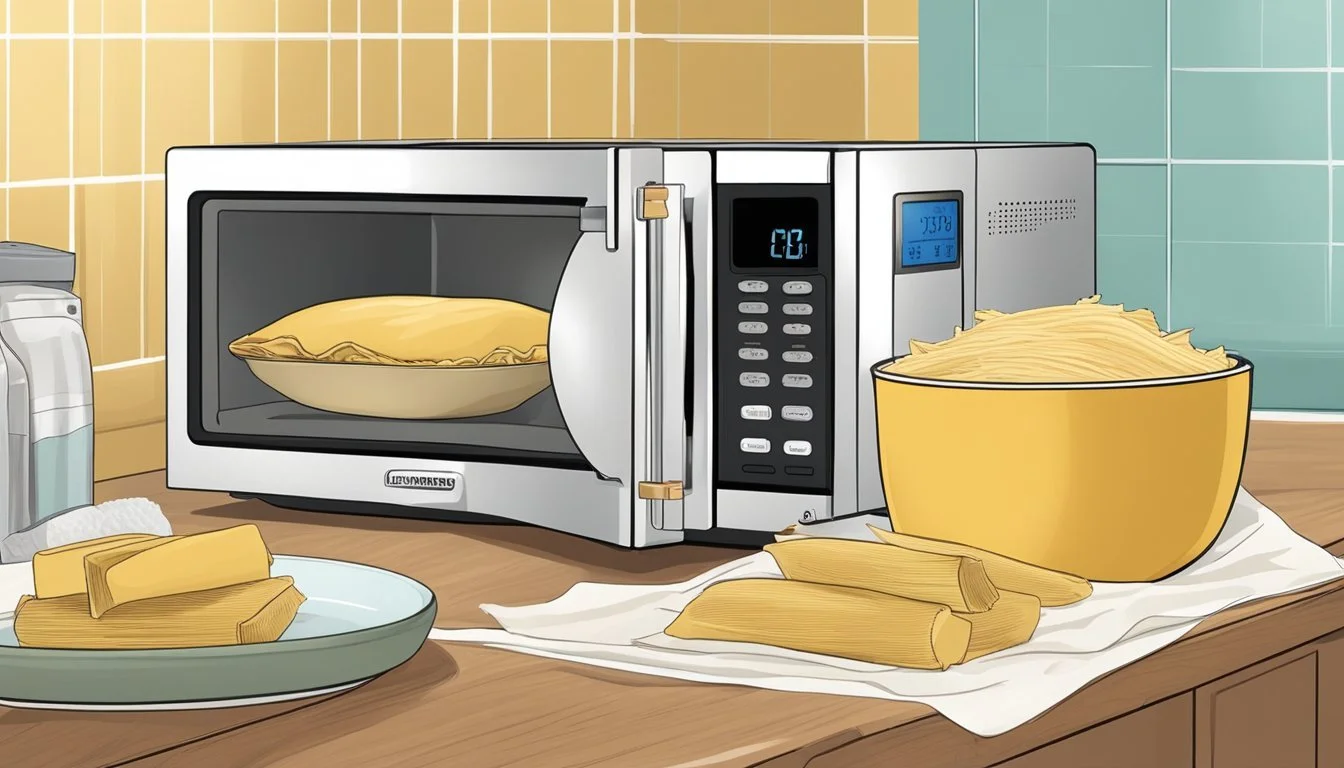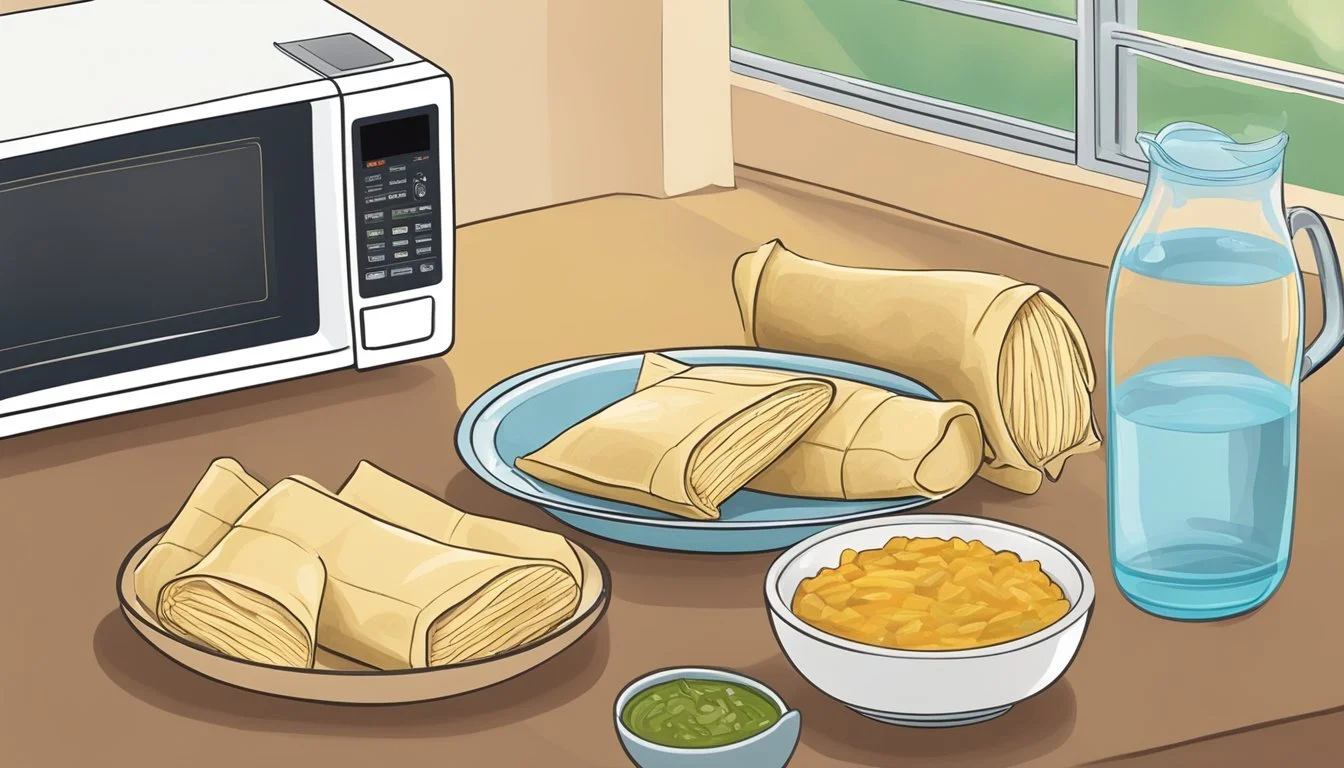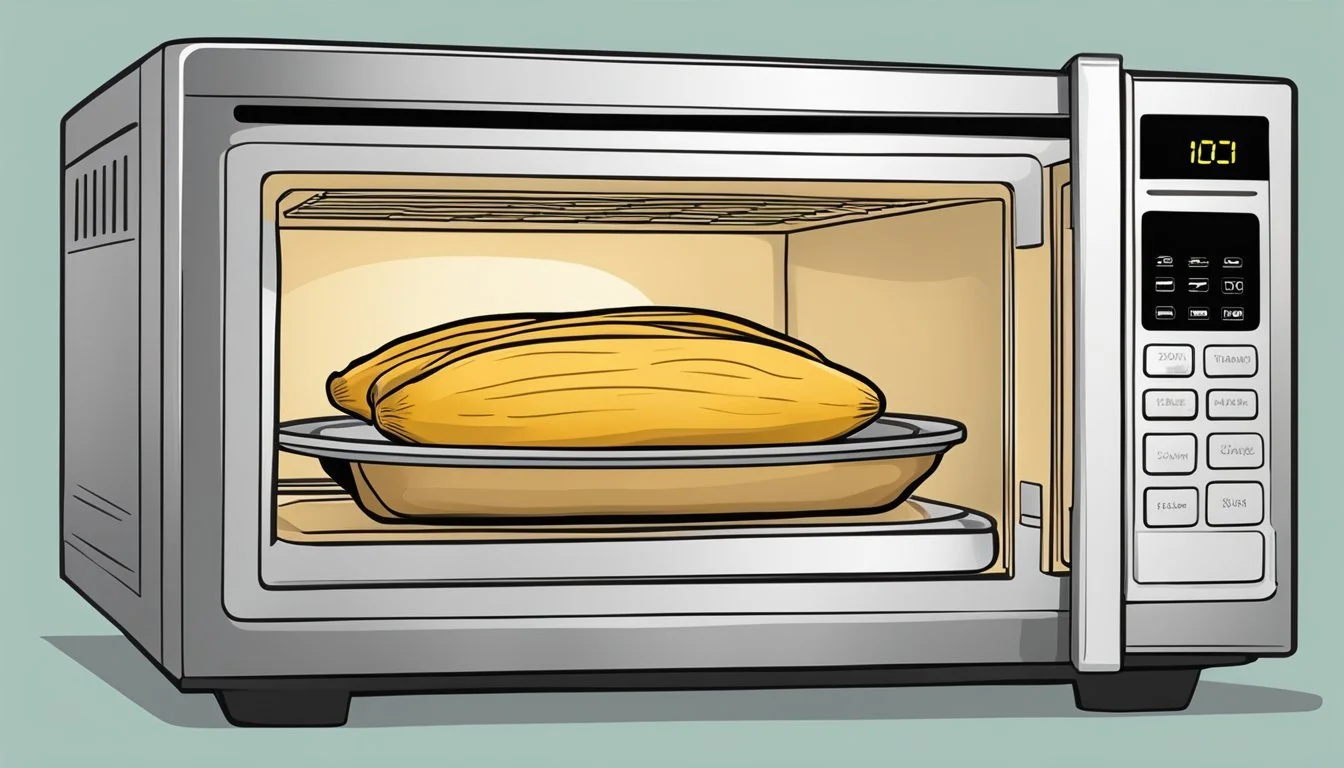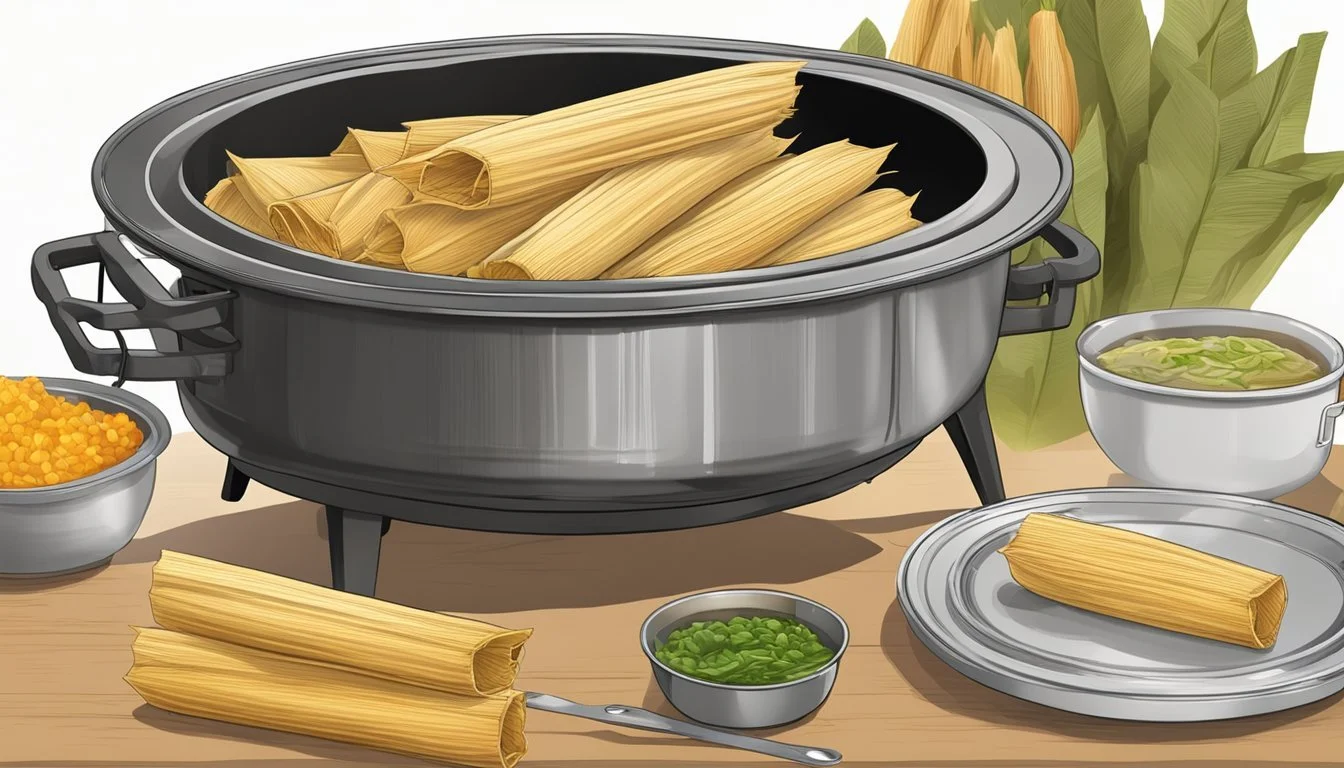How to Reheat Gluten-Free Tamales
Best Methods and Tips
Reheating gluten-free tamales can be an art, especially when aiming to preserve their delicious flavor and unique texture. The best way to reheat gluten-free tamales is by using a steamer. This method keeps the tamales moist and avoids drying them out, whether you're working with homemade tamales or leftovers. Simply fill the steamer with water, place the tamales in their husks, and steam for about 15 to 20 minutes. If the tamales are frozen, add an extra 10 minutes to ensure they are thoroughly heated.
For those who don't have a steamer, other techniques also work well. Using an air fryer, for example, is a quick and convenient option. Preheat the air fryer to 350°F, place the tamales in a single layer, and mist them with a bit of water to keep them from drying out. Another effective method is reheating in a skillet, adding a small amount of oil to the pan to achieve a slightly crispy exterior while keeping the inside tender.
Tamales, a traditional Mexican dish, are versatile and flavorful whether freshly made or reheated. Ensuring the correct reheating technique can make all the difference, so your gluten-free tamales remain as enjoyable as when they were first prepared. Whether dealing with refrigerated or frozen tamales, these methods can help maintain their authentic taste and texture, making your next meal just as delightful.
Understanding Tamales
Tamales are a cornerstone of Mexican cuisine known for their distinctive flavors and textures. This section delves into the foundational elements, fillings, and traditional wrapping methods.
The Basics of Masa
The foundation of any tamal is the masa. Masa is dough made from nixtamalized corn, known as masa harina. Essential ingredients include masa harina, baking powder, lard or vegetable shortening, and seasonings like salt. For gluten-free tamales, ensure all ingredients, especially masa harina, are certified gluten-free.
Masa should be mixed to the right consistency. The dough should be both pliable and slightly firm. Adding stock or milk helps achieve the ideal texture. Sweet tamales might use sugar and different flavorings, while savory ones typically use salt and sometimes cheese.
Common Fillings and Flavors
Tamales can be savory or sweet, catering to a wide array of tastes. Common savory fillings include pulled pork, chorizo, shredded chicken, and vegetables. Traditional recipes often feature chili verde or roasted peppers to enhance flavor.
Sweet tamales are also a beloved variation. These can include fillings like sugar, cinnamon, and fruits such as pineapple or raisins. Some might also incorporate queso fresco for a delightful creamy texture. The fillings are integral to the tamal's identity, each bringing a unique taste profile.
Differences in Wrapping Techniques
Wrapping tamales is an art. Two primary wrapping materials are used: dried corn husks and banana leaves. Both methods serve to encase the masa and fillings, allowing them to steam properly while imparting subtle, distinctive flavors.
Corn husks are more traditional in Mexican cuisine. These need to be soaked in warm water to become pliable. After filling with masa and choice fillings, the tamal is wrapped and tied securely.
Banana leaves provide a different culinary experience. They add an herbal note to the tamales and are often used for special varieties such as some southern Mexican or Central American recipes. These leaves also need to be prepped by briefly passing through heat to soften them before use.
Understanding these aspects of tamales ensures a more authentic cooking experience and appreciation for this traditional dish. Knowing the importance of each component helps in creating tamales that are rich in flavor, texture, and cultural significance.
Pre-Reheating Preparation
Proper preparation is crucial for ensuring your gluten-free tamales are reheated safely and deliciously. Focus on thawing and precise time and temperature settings to achieve the best results.
Thawing Tamales
Thawing frozen tamales before reheating is important for even heating and food safety.
Start by removing the tamales from the freezer and placing them in the refrigerator. Let them defrost for 24 hours to maintain texture and flavor. For faster defrosting, you can use the microwave's defrost setting or place them in a sealed plastic bag in cold water.
Always keep tamales in their husks while thawing to prevent drying out. Avoid leaving tamales at room temperature for extended periods, as this can lead to bacterial growth.
Prep Time and Temperature Setting
Precise prep time and temperature settings ensure fully reheated tamales without overcooking.
For ovens, preheat to 425°F. Wrap each tamale in aluminum foil to lock in moisture. Reheat for 20 minutes, flipping them halfway through. For air fryers, preheat to 350°F. Place tamales in a single layer, leaving space for air circulation. Mist with water to prevent drying and reheat for 15 minutes.
Using a steamer, bring water to a gentle boil. Place tamales in the steamer basket, ensuring space for steam circulation. Steam for 15-20 minutes. When using a pan, add a teaspoon of olive oil, remove tamales from husks, cover with a lid, and flip every 2-3 minutes while reheating.
Reheating Techniques
When it comes to reheating gluten-free tamales, it's essential to preserve their moisture, texture, and flavor. Each method has its advantages, and the best one for you will depend on your available appliances and time constraints.
Steamer Method
The steamer method ensures tamales stay moist and maintain their texture. It's a reliable way to reheat without compromising flavor. Fill a pot with water just below the steamer basket. Place the tamales upright, ensuring they don't touch the water. Cover the pot, bringing the water to a boil. Steam for around 15-20 minutes if thawed, or 20-30 minutes if frozen. Ensure the water does not dry out during the process.
Oven Method
Reheating tamales in the oven provides a balance between a moist interior and a slightly crisp exterior. Preheat the oven to 425°F. Wrap each tamale tightly in aluminum foil, removing any air to lock in moisture. Place them in the oven for 20 minutes, turning them over halfway through. For frozen tamales, increase the reheating time to 45 minutes.
Microwave Method
Microwaving is the quickest option for reheating tamales. This method can be tricky as microwaves can dry food out if not done correctly. Wrap each tamale in a damp paper towel to maintain moisture. Place them on a microwave-safe plate and heat on medium power for 1-2 minutes per tamale. Check frequently to avoid overcooking.
Stovetop Methods
Stovetop methods offer the chance to reheat with added flavors. To reheat using a frying pan, add a tablespoon of vegetable oil. Remove the tamales from their husks and place them in the preheated pan. Cover with a lid and cook over medium heat, flipping every 2-3 minutes, until heated through. Another option is using a steam function of an Instant Pot; place a trivet inside, add water below the trivet, and steam for about 10-15 minutes.
Alternative Appliances
For diverse reheating methods, appliances like air fryers, grills, and slow cookers can be used. In an air fryer, preheat to 350°F, mist tamales with water, and place them in a single layer for 10-15 minutes. On a grill, wrap tamales in foil and reheat over medium heat for 10-15 minutes. For a slow cooker, place tamales with a bit of water, use the steam function, or heat on low for 1-2 hours.
Serving Reheated Tamales
Enjoying reheated tamales involves turning them into a complete, flavorful meal that highlights their Mexican heritage. This preparation can be enhanced with thoughtfully chosen side dishes and proper presentation techniques.
Accompaniments and Side Dishes
Fresh tamales pair well with various accompaniments to create a balanced meal. Salsa or pico de gallo adds a fresh, zesty touch that complements the rich corn dough. Consider guacamole or sour cream for added creaminess. For a traditional touch, serve refried beans or a simple Mexican rice cooked with cumin and tomato sauce.
Vegetables like grilled corn or a crisp jicama salad can balance the tamale's heaviness. Cheeses such as crumbled cotija or melted queso fresco can be sprinkled over for extra flavor. When serving sweet tamales, a dollop of cinnamon-spiced whipped cream or a side of creamy cajeta can elevate the dessert experience.
Presentation Tips
Presentation makes a significant impact when serving tamales. Arrange them neatly on a plate, possibly leaving a portion of the husk on for a rustic look. Garnish with fresh herbs like cilantro or parsley for a pop of color.
Include small bowls of sauces and salsas, allowing guests to customize their tamales. Use brightly colored plates or platters to contrast with the tamales' warm, earthy tones, enhancing the dining experience.
For a family-style meal, consider serving tamales alongside tacos and other Mexican cuisine staples, creating a versatile and enjoyable feast that captures the essence of authentic Mexican dining.
Storage Tips for Tamales
Properly storing tamales is essential to maintaining their flavor and texture. This section provides practical tips for cooling and storing your tamales for both short-term and extended periods.
Proper Cooling and Storage Techniques
Tamales need to cool completely before being stored to prevent the masa dough from becoming soggy. Place them on a wire rack in a single layer to allow air circulation. This helps maintain the tamales' structure and prevents the meat filling from becoming too moist.
Once cooled, wrap tamales individually in aluminum foil or plastic wrap. Then, place them in an airtight container or freezer bag. Label the wrapping with the date to keep track of freshness. Tamales can be stored in the refrigerator for up to one week or frozen for up to six months.
Maximizing Freshness and Flavor
To preserve the original flavor and consistency, avoid overcrowding your storage containers. Overcrowding can lead to an uneven spread of moisture, affecting the masa dough and meat filling. Use moisture-resistant bags for freezing to prevent freezer burn.
When storing leftover tamales purchased from a grocery store or ordered online, it’s crucial to follow the same cooling and wrapping procedures. This ensures that the tamales remain moist and flavorful. Pre-portioning tamales before freezing makes it easier to reheat only what is needed, reducing waste.
For the best results, always reheat tamales by steaming, as it helps retain moisture and flavor.
Health and Safety Considerations
When reheating gluten-free tamales, food safety is paramount. Ensuring that the tamales reach an internal temperature of at least 165°F is crucial to eliminate harmful bacteria.
Gluten-Free Precautions
Maintaining the gluten-free integrity of the tamales is essential. Always check labels and ingredients for hidden gluten sources. Common culprits include sauces or seasonings that might contain wheat derivatives.
Allergen Awareness
Beyond gluten, it's vital to be mindful of other potential allergens. Ingredients like dairy, nuts, and soy could be present. Read labels thoroughly to avoid any allergic reactions.
Avoid Cross-Contamination
Cross-contamination can occur easily, jeopardizing the gluten-free status of the tamales. Use separate utensils, cooking surfaces, and storage containers for gluten-free and gluten-containing foods. Cleaning surfaces and hands frequently can further reduce this risk.
Using Appropriate Equipment
Different methods of reheating tamales, such as in the oven, air fryer, or steamer, may require specific attention to avoid contamination. Ensure that equipment is clean and not previously used for gluten-containing foods without proper cleaning.
Reheating Method Temperature Duration Oven 325°F-425°F 15-30 minutes Steamer Gentle boil 15-20 minutes Air Fryer 350°F 10-15 minutes
Health and safety efforts can safeguard against exposure to gluten and other allergens. By following these guidelines meticulously, one can enjoy gluten-free tamales without compromising on safety.








